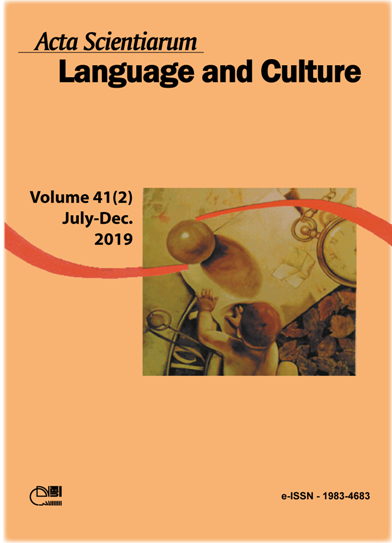A unidade lexical crush e seus usos: inglês, português do Brasil e francês
Résumé
Com a globalização e a facilidade de acesso à internet, sabe-se que hoje em dia há um encurtamento de distâncias devido ao aumento do uso de tecnologias, principalmente por meio das redes sociais. A proposta deste artigo é estudar o uso da unidade lexical (UL) crush, vocábulo de origem inglesa, mas que por meio das mídias como Facebook, Instagram, Twitter, entre outras, vem se tornando cada dia mais popular em várias línguas, como em português do Brasil e em francês. É importante salientar que não trabalhamos com o português europeu e sim, somente, do Brasil. Para que esta pesquisa fosse realizada, a Lexicologia constituiu o aporte teórico, mais especificamente os estudos acerca do empréstimo, de estrangeirismos (Silva, 2006) e de neologismos (Alves, 1996). Este artigo também se apoia na Linguística de Corpus (Berber Sardinha, 2004), para seleção e tratamento de todos os corpora necessários para esse estudo. O levantamento dos corpora em inglês, português e francês, foi realizado por meio da ferramenta BootCat (Baroni & Bernardini, 2004), a fim de analisar o uso da UL crush nessas três línguas. De acordo com nossa pesquisa, constatamos que a UL inglês já pode ser considerada como um empréstimo no português em vias de se adaptar sintaticamente. Dessa forma, a UL não é mais considerada como um estrangeirismo em português, mas sim um neologismo.
Téléchargements
DECLARAÇÃO DE ORIGINALIDADE E DIREITOS AUTORAIS
Declaro que o presente artigo é original, não tendo sido submetido à publicação em qualquer outro periódico nacional ou internacional, quer seja em parte ou em sua totalidade.
Os direitos autorais pertencem exclusivamente aos autores. Os direitos de licenciamento utilizados pelo periódico é a licença Creative Commons Attribution 4.0 (CC BY 4.0): são permitidos o acompartilhamento (cópia e distribuição do material em qualqer meio ou formato) e adaptação (remix, transformação e criação de material a partir do conteúdo assim licenciado para quaisquer fins, inclusive comerciais.
Recomenda-se a leitura desse link para maiores informações sobre o tema: fornecimento de créditos e referências de forma correta, entre outros detalhes cruciais para uso adequado do material licenciado.




















6.png)









